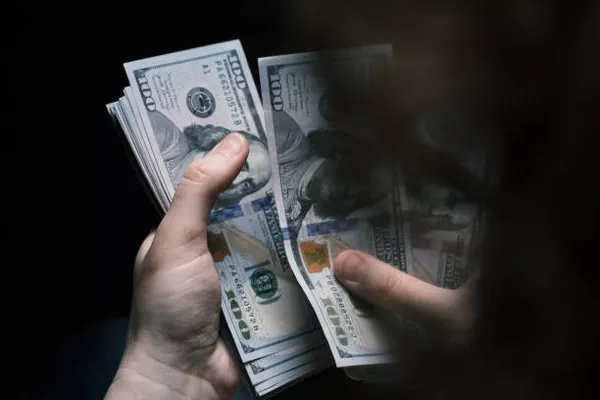In the ever-shifting landscape of global finance, investors continually seek opportunities to capitalize on market movements. One such strategy involves shorting the dollar, a process by which investors bet against the value of the US currency. Shorting the dollar can be a complex endeavor, requiring careful analysis, risk management, and an understanding of global economic forces. In this article, we will explore the intricacies of shorting the dollar, examining various strategies, considerations, and potential risks.
Understanding Shorting the Dollar
Shorting the dollar involves selling the currency in the anticipation that its value will decrease. This can be done through various financial instruments such as currency futures, options, or exchange-traded funds (ETFs). Investors typically short the dollar when they believe that other currencies will outperform it or when they anticipate economic or geopolitical factors that could weaken the dollar’s value.
1. Currency Futures and Options
Currency Futures: Currency futures are standardized contracts traded on exchanges that obligate the buyer to purchase or sell a specified amount of currency at a predetermined price and date in the future. For shorting the dollar, investors would sell futures contracts, expecting the dollar to depreciate against the counterpart currency.
Currency Options: Currency options provide the holder the right, but not the obligation, to buy or sell a specific currency at a predetermined price within a set timeframe. Investors can purchase put options on the dollar to profit from its decline without the obligation to sell it.
2. Forex (Foreign Exchange) Market
The forex market is the largest and most liquid financial market globally, facilitating the exchange of currencies 24 hours a day, five days a week. Investors can short the dollar directly by selling it against another currency pair, such as EUR/USD (euro/dollar) or USD/JPY (dollar/yen), through forex trading platforms provided by brokers.
3. Inverse ETFs
Inverse exchange-traded funds (ETFs) are financial products designed to move in the opposite direction of the underlying index or asset. For shorting the dollar, investors can purchase inverse ETFs that track the performance of a basket of currencies or a single currency against the dollar.
Factors Influencing Dollar Shorting Strategies
1. Economic Indicators
Key economic indicators, such as GDP growth, inflation rates, employment data, and interest rates, can significantly impact the value of the dollar. Investors shorting the dollar must closely monitor these indicators and their potential effects on currency markets.
Interest Rates: Central bank monetary policies, particularly interest rate decisions, play a crucial role in currency valuation. Higher interest rates typically strengthen a currency by attracting foreign capital, while lower rates may weaken it.
2. Geopolitical Events
Geopolitical events, such as trade tensions, political instability, or military conflicts, can create volatility in currency markets and influence investor sentiment towards the dollar. Traders shorting the dollar should assess geopolitical risks and their potential implications for currency movements.
3. Market Sentiment
Market sentiment, driven by investor perception and confidence, can influence short-term fluctuations in currency prices. Factors such as risk appetite, sentiment towards the US economy, and global market trends can impact the dollar’s valuation relative to other currencies.
Risks and Considerations
1. Leverage
Trading currency derivatives or forex on margin involves leverage, which magnifies both potential gains and losses. While leverage can amplify profits when shorting the dollar, it also increases the risk of substantial losses if the market moves against the investor.
2. Volatility
Currency markets can be highly volatile, subject to rapid price fluctuations influenced by various economic, geopolitical, and market factors. Investors shorting the dollar must be prepared to manage volatility and potential adverse movements in currency prices.
3. Counterparty Risk
When trading currency derivatives or using leverage, investors are exposed to counterparty risk, the risk that the counterparty to the trade may default on its obligations. It’s essential to trade through reputable brokers and exchanges to mitigate counterparty risk.
FAQs
1. What are the potential benefits of shorting the dollar?
Shorting the dollar can offer potential benefits such as diversification of investment portfolios, profit opportunities during dollar depreciation, and hedging against currency risk for international investments denominated in dollars.
2. How can investors mitigate risks when shorting the dollar?
Investors can mitigate risks by employing risk management strategies such as setting stop-loss orders to limit potential losses, diversifying their currency exposures, staying informed about market developments, and avoiding excessive leverage.
3. What are the tax implications of shorting the dollar?
Tax implications vary depending on the investor’s jurisdiction and the specific financial instruments used for shorting the dollar. Investors should consult with tax professionals or financial advisors to understand the tax treatment of their currency trading activities.
See Also How To Find Stocks Under 1 Dollar On Robinhood
In conclusion
Shorting the dollar can be a viable strategy for investors seeking to capitalize on currency market dynamics and diversify their portfolios. However, it requires careful analysis, risk management, and an understanding of the factors influencing currency valuations. By staying informed, managing risks effectively, and employing appropriate trading strategies, investors can navigate currency markets and potentially profit from shorting the dollar.


